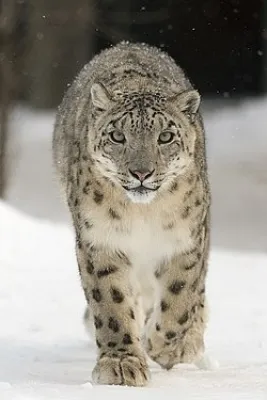Are Trans-Himalayan Regions in Himachal Home to 83 Snow Leopards?

Synopsis
Key Takeaways
- 83 snow leopards were recorded in Himachal Pradesh.
- The population increased from 51 in 2021.
- Highest densities found in upper Spiti and Kinnaur.
- Community involvement is vital in conservation efforts.
- Ongoing threats include habitat loss and disease transmission from free-ranging dogs.
Shimla, Nov 2 (NationPress) The trans-Himalayan ecosystem in Himachal Pradesh boasts an impressive population of 83 snow leopards, an iconic species often referred to as the "Ghost of the Mountain". This figure marks a significant increase from the 51 identified in the prior assessment conducted in 2021.
The latest round of snow leopard population assessment was carried out by the state Wildlife Wing in partnership with the Nature Conservation Foundation during 2024-25. This extensive survey covered an area of 26,000 sq km across the challenging snow leopard habitat, characterized by steep mountains and narrow valleys with limited access during winter months. The density of snow leopards was found to range between 0.16 to 0.53 individuals per 100 sq km.
Notably, the trans-Himalayan regions of the upper Spiti landscape and Pin within the Lahaul-Spiti district exhibited the highest densities of snow leopards, with areas such as Kinnaur and Tabo also showing significant populations.
In contrast, the Lahaul-Pangi region and the Great Himalayan National Park (GHNP), recognized as a UNESCO World Heritage Site, presented lower densities.
The calculated average density of snow leopards across the state stands at 0.35 (ranging from 0.23-0.53) individuals per 100 sq km, with an estimated sigma of 5.2 (between 4.7-5.8) km.
Beyond Himachal Pradesh, snow leopards can also be found in regions such as Jammu and Kashmir, Ladakh, Uttarakhand, Sikkim, and Arunachal Pradesh.
The Hemis-Spiti landscape has been recognized as one of the 20 landscapes essential for maintaining healthy snow leopard populations across their range. Himachal Pradesh is also home to unique high-altitude wildlife, including blue sheep, ibex, and Himalayan musk deer, which serve as prey for snow leopards.
Other notable mammals inhabiting this snow leopard territory include the brown bear, common leopard, red fox, stone marten, mountain weasel, and yellow-throated marten.
The study titled "Status of Snow Leopard and Prey in Himachal Pradesh" documented 44 snow leopards through 262 independent detections. From this dataset, researchers estimate the total snow leopard population size to be around 83 (estimated range 67-103 individuals).
Within the lower elevation regions (Lahaul-Pangi and GHNP), the estimated population is 24 (ranging from 19-30 individuals), while the higher elevation areas (upper Spiti landscape and Kinnaur) have an estimated 59 (between 48-73) individuals.
The camera trapping efforts not only provided data on snow leopards but also recorded the Pallas’s Cat in Kinnaur, a species that had not been officially documented before, along with the woolly flying squirrel, which had not been observed in the state for several decades.
Local community members actively participated in the camera trapping project, with at least 23 individuals from the snow leopard landscape contributing to the survey. They received significant support from NCF researchers, frontline staff from the state Wildlife Wing, and other villagers.
Women played a crucial role in the camera trapping initiative, going beyond merely setting up devices. They showcased exceptional skills in analyzing the images captured by the cameras, as highlighted in the study. Women from Kibber demonstrated that with proper training and resources, local communities, particularly women, can significantly contribute to biodiversity conservation.
The report indicates that the second population estimation recorded 83 individuals, an increase from the 51 snow leopards identified in the first assessment in 2021. Researchers also observed cubs in various regions, suggesting the presence of breeding individuals.
Snow leopards were documented as either resident individuals within the population or as dispersing individuals traversing these vital connecting habitats.
While snow leopard numbers appear stable in Himachal Pradesh, they still confront serious threats. These range from retaliatory actions due to livestock predation to habitat loss from poorly planned development projects, highlighting the need for active and innovative conservation strategies.
A concerning trend has emerged regarding the increased presence and impact of free-ranging dogs in snow leopard habitats. These dogs are known to spread diseases to snow leopards, predate on wildlife, including key prey species, and displace snow leopards from their kills.
Both assessments have generated valuable knowledge that provides a solid foundation for understanding the motivations and perspectives of local communities, who must remain central to all conservation initiatives concerning the snow leopard.
The state released its inaugural comprehensive report on the snow leopard population survey in 2021, marking India’s first state-wide assessment of the species conducted twice.
(Vishal Gulati can be contacted at vishal.g@ians.in)









